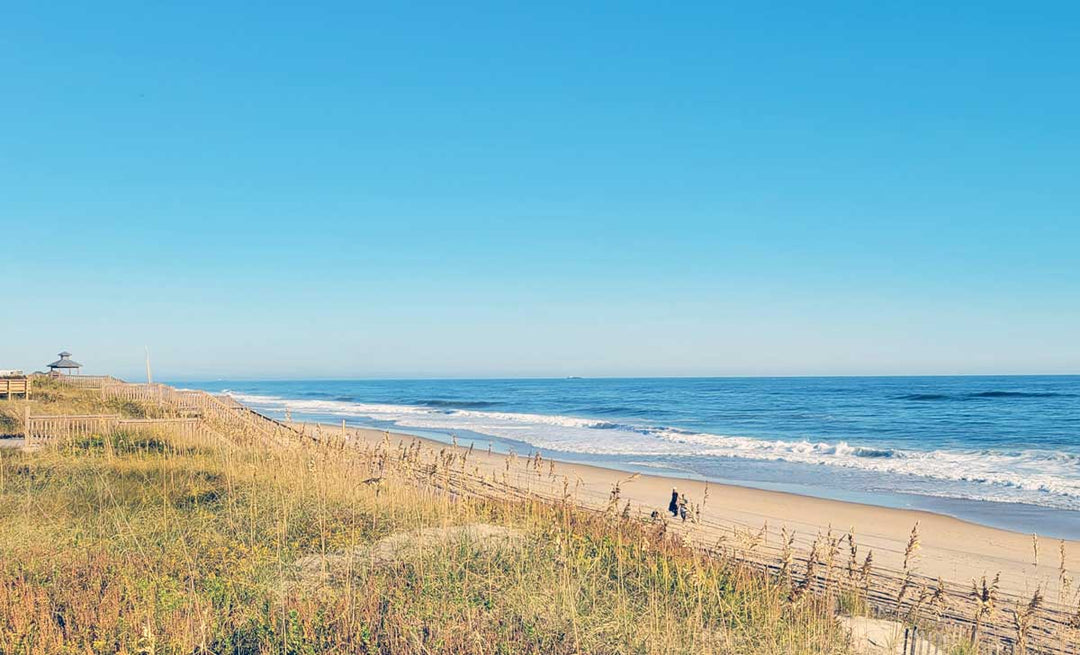19 Facts About Wright Brothers National Memorial

Two brothers from Dayton, Ohio, changed the world forever with their curious minds and unrelenting spirits. The Wright Brothers National Memorial pays homage to Wilbur and Orville Wright and their contributions to progressing the world of aviation.
Read on to learn 19 facts about the brother's memorial, located along the Outer Banks of North Carolina!
- Location of the Memorial: The Wright Brothers National Memorial is located in Kill Devil Hills, North Carolina, and commemorates the first successful powered flight by the Wright Brothers, which took place on December 17, 1903.
- Visitation: Each year, about 400,000 people visit the memorial.* Not surprisingly, the most popular months to visit are June, July, and August, aka the barrier islands' peak season.
- Design and Architecture: The monument is a tall, white granite structure that stands 60 feet high. It was designed by architect Rodgers Marvel, and sculptor Donald De Lue created the statue of the Wright brothers.
- History of the Monument: The Wright Brothers National Memorial was established in 1927 by President Calvin Coolidge. It was initially a 424-acre area, but over time, the monument has been expanded to cover over 2,800 acres.
- The Outer Banks Connection: The Wright brothers flew their aircraft on the Outer Banks of North Carolina because of the consistent wind and soft sand dunes. They found this location to be ideal for their testing and experimentation.
- The First Flight: On December 17, 1903, Orville Wright piloted the Wright Flyer for 12 seconds, covering a distance of 120 feet. This was the first successful powered flight in history at Kill Devil Hills.
- The Wright Brothers Museum: The Wright Brothers National Memorial Museum contains many artifacts and exhibits related to the Wright brothers' lives and achievements. It includes an original Wright Flyer and a replica of their bicycle shop.
- Orville Wright: Orville Wright was the younger of the two Wright brothers. He lived from 1871 to 1948 and continued experimenting with aviation even after his brother Wilbur's death in 1912.
- Wilbur Wright: Wilbur Wright was the elder of the two brothers and lived from 1867 to 1912. He was the driving force behind their experimentation with aviation and worked tirelessly to perfect their aircraft.
- Centennial Celebration: In 2003, the Wright Brothers National Memorial celebrated the 100th anniversary of the first powered flight. The celebration included various events and exhibits, attracting visitors from all over the world. Event attendees included George W. Bush, the president at the time.
- Symbolic Elements: The monument contains several symbolic elements, including a bronze medallion with the Wright brothers' likenesses, an inscription in Latin that reads "In commemoration of the conquest of the air," and a granite boulder from Kill Devil Hill.
- Visitor Center: The visitor center at the Wright Brothers National Memorial features exhibits on the history of aviation, a bookstore, and a gift shop. It also offers ranger-led tours of the park.
- Monument Restoration: In 2018, the Wright Brothers National Memorial underwent a significant restoration project. The monument was cleaned, the bronze doors were repaired, and the lighting was updated. The restoration cost over $1 million.
- Annual Events: The Wright Brothers National Memorial hosts various yearly events, including celebrating the Wright brothers' first flight on December 17 and Kitty Hawk Kites' Fly Into Spring Kite Festival in early April. These events offer visitors a chance to learn more about the Wright brothers' legacy and aviation history.
- The Flyer II: The Wright brothers' second aircraft, the Flyer II, was their first efficient airplane. It featured a redesigned wing and was used for various tests and demonstrations.
- The First Military Flight: In 1909, the Wright brothers completed the first military flight, flying a specially-designed aircraft for the US Army Signal Corps. This flight was a significant milestone in the development of military aviation.
- The Wright Brothers' Legacy: The Wright brothers' contributions to aviation have impacted the world. Their innovations paved the way for modern aviation, and their legacy inspires scientists and engineers today.
- National Historic Landmark: The Wright Brothers National Memorial is a designated National Historic Landmark. This designation recognizes the monument's historical significance and ensures its preservation for future generations.
- Accessibility: The Wright Brothers National Memorial is committed to making its facilities and programs accessible to all visitors. The park offers a variety of accommodations for people with disabilities, including wheelchair-accessible exhibits and audio descriptions for visually-impaired visitors.
So, there you have it! I hope you learned something new about these two pioneers from Dayton, OH. Next time you visit Kill Devil Hills, ensure the Wright Brothers National Memorial is on your vacation itinerary!
*https://www.outerbanks.org/partners/budget-and-statistics/






Leave a comment